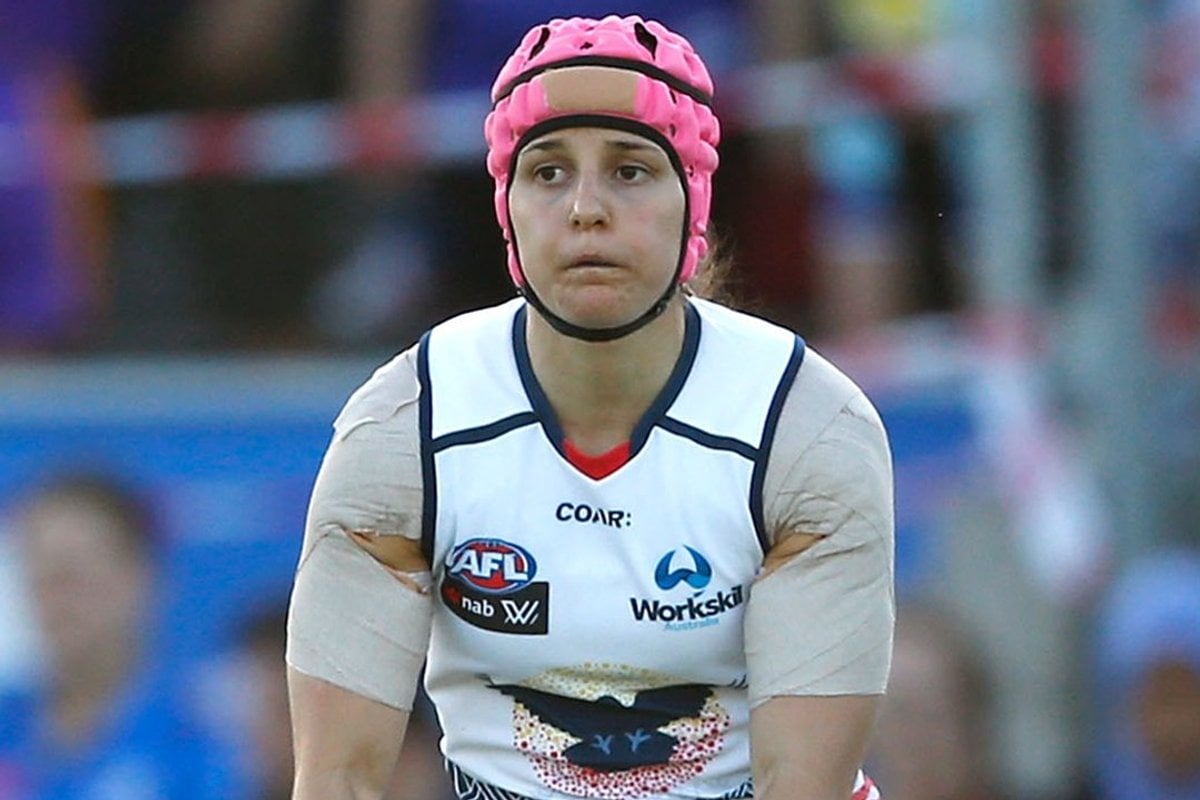
This post mentions suicide and could be triggering for some readers.
AFLW player Heather Anderson has become the world's first known female athlete to be diagnosed with chronic traumatic encephalopathy (CTE), a degenerative brain disease caused by repeated head injuries.
With the consent of her family, the diagnosis was made after the 28-year-old's brain was donated to the Australian Sports Brain Bank to better understand why she died.
The finding in a female athlete will have major repercussions for the future of women in sports.
Anderson played for the Adelaide Crows during the 2017 AFLW season and in the grand final win against the Brisbane Lions.
She was known for wearing bright pink headgear during games for protection.
"[Mum] hated watching me get smashed," Anderson told Mamamia in 2017.
The premiership player retired in 2017 after suffering a shoulder injury and returned to work as an army medic in Perth.
She took her own life in November 2022, aged 28.
The Adelaide Football Club is deeply saddened by the unexpected passing of Premiership player Heather Anderson. Our thoughts and prayers are with her family and friends. pic.twitter.com/4aUz8GZ8p7
— Adelaide Crows AFLW (@CrowsAFLW) November 14, 2022




























































































